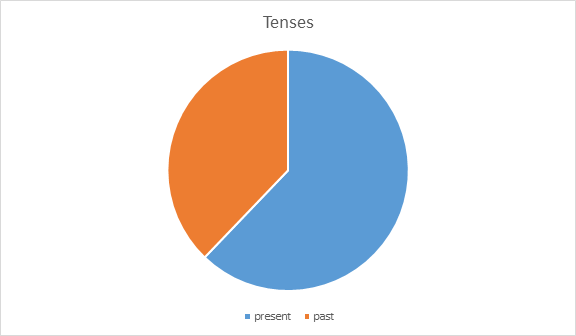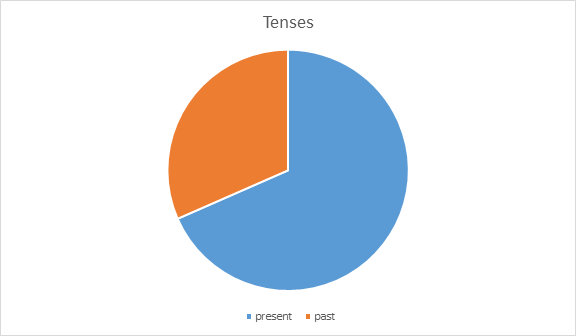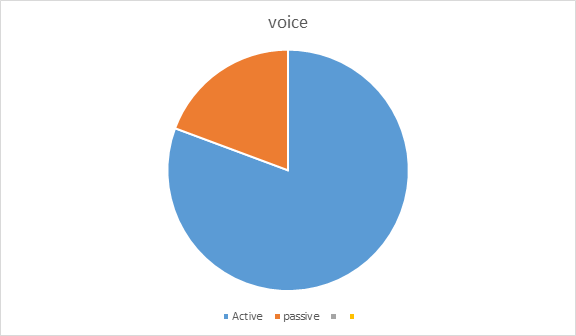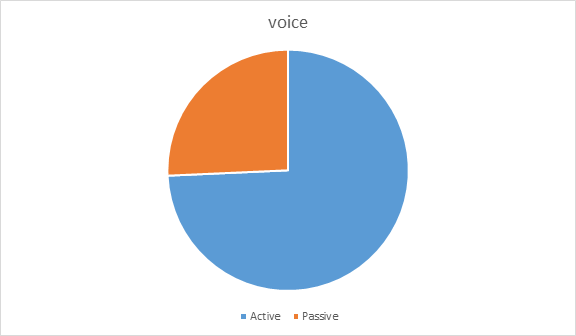Safa Naji Abd1 Prof. Qasim Obayes Al-Azzawi2
M.A. in English Language and Linguistics
Email:sfanajybdtyh@gmail.com
University of Babylon\ College of Education for Human Sciences
HNSJ, 2022, 3(10); https://doi.org/10.53796/hnsj31017
Published at 01/10/2022 Accepted at 18/09/2022
Abstract
Language as a means of communication is used to convey many purposes. Thus, the study aims to analyze the selected samples of editorials concerning coronavirus according to the model of Rhetorical Analysis of the Swales’ CARS and lexico- grammatical one.
Key Words: Genre Analysis, Rhetorical Analysis, lexico- grammatical, editorial, Coronavirus
1.Introduction
Genre as a literary concept is used to analyze the form and rhetorical function of non-literary discourse such as research articles, theses/dissertations, textbooks, news reports, editorials. It is served as a tool for developing educational practices in rhetoric, linguistics, composition studies, English for Specific Purposes (ESP), English for Academic Purposes (EAP) (Ansary and Babaii, ,2005).For researchers best ,medical editorials have received little attention regarding this kind of analysis. The study can benefit researchers who are interested in discourse analysis and those who interest in the medical editorials.
2. Genre and Medical Editorial
Genre is defined as a recognizable communicative events are utilized to characterize identifiable communicative purposes. It can be understood by a member of the professional or academic community it regularly occurs. Genre has constraints on allowable contributions in terms intents, positioning, form, functional value. These constraints, however, are utilized by the expert members of discourse community to fulfill private intentions within the framework of society recognized purposes ( Tongsibsong 2012).
Bhatia states that the study of situated linguistic behavior in academic or professional contexts is genre analysis in terms of typification of rhetorical action; regularities of staged, goal-oriented social processes; or consistency of communicative purposes. Nowadays, the current practices in the use of languages is mainly dominated by genre analysis (ibid.,).
The editorial is used to indicate the editor’s opinion when it has begun in 1830.This word has been acknowledged to indicate an editor writes an article then this term has been enlarged to take sometimes the position in left hand page .It typically published in special page which presents the letter to an editor by members of the public as opposed to the opted page in which the reports opinion is written by writers who are indirectly affiliated with the publication. It might regard as instrument that shows the opinion of the periodicals. This type of written discourse may be an instrument to manifest the opinion of the editor. It is defined as a corporate voice or position of a media organization on any particular issue of public interest. Duyile views editorial as an opinion of the newspaper which is written for the understanding of readers in order to guide them to take decisions on the issues being discussed. Moreover, editorial is defined by her as a comment or an argument that is used to support, for instance, a particular policy, an action, or an idea (ibid:28).
An editorial consists of a critical evaluation, interpretation and presentation of significant current events with an intention to inform, educate, entertain and influence the reader. It is in terms of a statement of opinion from an editor or publisher about you and your business. It also refers to media reporting formed by news staff. The last but not least, an editorial is defined as a journalistic essay attempts to inform or explain, persuade or convince, and stimulate insight in an entertaining or humorous manner. Accordingly, editorial can regard that the expression or corporate opinion as a fundamental aspect of an editorial. A deeper perspective is interpreted by an editorial. Moreover, substance and depth of analysis are reported in order to entertain readers (ibid.,).
According to Parodi(2010:73) ,specialized Genres are found in the Professional Corpus. Sometimes, they are used as a respond to specific communicative purposes for discourse interactions such as business transactions, regulatory procedures, reporting and describing medical situations, dissemination of information, and knowledge acquisition. Some of these communicative interactions take, for example, the form of Bidding Specifications, Call for Bids, Quotations, Medical Reports, Brochures, and Textbooks.
The reduced variety of genres found in academic settings (only nine), in comparison with the more widespread and diverse number detected in the workplace, could present an obstacle when going from academic to professional life. The discourse genres collected from professional settings vary greatly in comparison to those identified in the academic world with respect to rhetorical organizations and communicative purposes, as well as lexico-grammatical features (ibid:84).
Huth states four broad categories of texts in written medical discourse, first of all, articles for reporting clinical, epidemiologic, or laboratory research. Secondly, articles reporting a case series analysis, third category is presented individual case reports; and the last but not least, review articles, editorials, and similar articles based on critical assessment of the literature and personal experience( Kunt-Akbaş,2013 ).Editorials are classified as one of the four major types of written medical texts, together with case reports, review articles, and research papers(ibid.,).
It is worth mentioning that the medical texts are written by and for the physicians, the fact that these professionals form a specific discourse community puts certain constraints on the way they produce and use medical texts( ibid.).
The lexico-grammatical analysis involves a quantitative examination of the prominent linguistic features of the medical editorial, focusing particularly on the use of tenses, active and passive sentences, personal pronouns and noun phrases (ibid.,).
3. Methods of Analysis
The study follows rhetorical analysis(hence forth RA) model and lexico-grammatical one. The Rhetorical Analysis has a dynamic relationship with all other public research-process genres, such as abstracts, theses and dissertations, presentations, grant proposals, books and monographs. Rhetorical analysis is given prominence because of their quantity. It has been established that about five million RAs in all disciplines and all languages are published every year. This is an indication that a very large number of people use this kind of genre in their production and comprehension. They have been become the standard product of the knowledge-manufacturing industries (Arsyad and Wardhana2014:150-151).
The RA introduction should be convincingly argumentative and persuasive as well as interestingly informative because this is the place where writers must attract their reader’s attention so that they are willing to read the entire article ( ibid.).
The rhetorical style of RA introduction in international journals published in English generally follows the pattern of ‘create a research space’ (CARS) as Swales has suggested. In this pattern, an RA introduction consists of three units or moves with different communicative functions. Each move contains of one or more subsequent units or steps with different communicative function aiming to describe each move in details in order to be more easily understood. In each subsequent unit or step, there can also be a smaller communicative unit.
4.The Data and Analysis
4.1. The first method in the study is used to investigate the rhetorical style in the editorials of coronavirus.
Move 1: Establishing a territory
Step 1 Claiming centrality; and/or
The SARS-CoV-2 pandemic has inspired new interest in understanding the fundamental pathology of acute respiratory distress syndrome (ARDS),which has been associated with severe coronavirus disease 2019 (Covid-19) (Harri,Hardin2020).
The latest threat to global health is the ongoing outbreak of the respiratory disease that was recently given the name Coronavirus Disease 2019(Covid-19) (Fauci, Lane and Redifield 2020).
Step 2 Making topic generalization(s); and/or
ARDS has long been recognized to be remarkably heterogeneous, with not only a wide range of causes but also a broad spectrum of severity, abnormalities on imaging, and gas-exchange impairment.1 The form of ARDS that is associated with Covid-19 is no different.( Harri,Hardin2020)
It was rapidly shown to be caused by a novel coronavirus that is structurally related to the virus that causes severe acute respiratory syndrome (SARS )( Fauci, Lane and Redifield 2020).
Step 3 Reviewing items of previous research
A long-standing goal has been to define endotypes that subdivide ARDS into groups on the basis of distinct biologic and pathologic processes in order to design higher-yield clinical trials and tailor treatment. Ackermann and colleagues now report in the Journal4 their use of novel techniques to better elucidate some of the biologic pathways that result in clinical ARDS. The investigators performed a detailed histologic study of lungs obtained on autopsy from patients with Covid-19 and historical samples from the 2009 H1N1 influenza outbreak (seven samples in each group) ( Harri,Hardin2020).
IAs in two preceding instances of emergence of coronavirus disease in the past18 years2 — SARS (2002 and 2003) and Middle East respiratory syndrome (MERS) (2012 to the present) (Fauci, Lane and Redifield 2020).
Declining rhetorical effort
Unsurprisingly, both groups had evidence of diffuse alveolar damage, with widespread signs of thrombosis. Such injury to the alveoli is the pathognomonic histologic finding in ARDS, and both microthrombosis and macrothrombosis are also commonly observed (Harri,Hardin2020).
the Covid-19 outbreak has posed critical challenges for the public health, research, and medical communities (Fauci, Lane and Redifield 2020).
Move 2: Establishing a niche
ARDS has long been recognized to be remarkably heterogeneous, with not only a wide range of causes but also a broad spectrum of severity, abnormalities on imaging, and gas-exchange impairment ( Harri,Hardin2020).
The efficiency of transmission for any respiratory virus has important implications for containment and mitigation strategies. .(Fauci, Lane and Redifield 2020)
Move 3: Occupying a niche
Step 1A Outlining purposes; or
A long-standing goal3 has been to define endotypes that subdivide ARDS into groups on thebasis of distinct biologic and pathologic processes in order to design higher-yield clinical trials and tailor treatment. .( Harri,Hardin2020)
Step 1B Announcing present research
Present study, however, several limitations complicate a direct comparison of the Covid-19 and influenza samples. The authors acknowledge that the extent and degree of fibrin organization in the influenza samples, along with a greater weight of the lungs, indicate that these patients had a more advanced stage of diffuse alveolar damage than the patients with Covid-19. Such damage progresses through different stages as time elapses from the initial injury, so this temporal heterogeneity complicates any direct comparison( Harri,Hardin2020).
The current study indicates an estimated basic reproduction number (R0) of 2.2, which means that, on average, each infected person spreads the infection to an additional two persons (Fauci, Lane and Redifield 2020).
Step 2 Announcing principle findings
The investigators’ conclusion that “vascular angiogenesis distinguished the pulmonary pathobiology of Covid-19 from that of equally severe influenza virus infection” has to be considered speculative. It should also be noted that regulators of angiogenesis (e.g., angiopoietin-2) have long been acknowledged as ARDS biomarkers, even in the pre–Covid-19 era. Nevertheless ,this observation of angiogenesis in an early stage of diffuse alveolar damage is important. This study emphasizes the heterogeneity that is fundamental to the clinical syndrome of ARDS, which affects not only prognosis and potential treatment response but also the interpretation of clinical trials (Harri,Hardin2020).
The Covid-19 outbreak is a stark reminder of the ongoing challenge of emerging and reemerging infectious pathogens and the need for constant surveillance, prompt diagnosis, and robust research to understand the basic biology of new organisms and our susceptibilities to them, as well as to develop effective countermeasures (Fauci, Lane and Redifield 2020).
-Editorial is titled with “Covid-19 — Navigating the Uncharted” and it is introduced by Fauci, Anthony S. , M.D., H. Clifford Lane,Robert R. Redfield,
Move 2: Establishing a niche
The efficiency of transmission for any respiratory virus has important implications for containment and mitigation strategies
Move 3: Occupying a niche
Step 1B Announcing present research
The current study indicates an estimated basic reproduction number (R0) of 2.2, which means that, on average, each infected person spreads the infection to an additional two persons
Step 2 Announcing principle findings
The Covid-19 outbreak is a stark reminder of the ongoing challenge of emerging and reemerging infectious pathogens and the need for constant surveillance, prompt diagnosis, and robust research to understand the basic biology of new organisms and our susceptibilities to them, as well as to develop effective countermeasures.
4.2.The second method in the study is used to investigate the lexico-grammatical in the editorials of coronavirus .
4.2.1.Tenses
Present tense is the remarkable tense in coronavirus editorials since they state current events and facts.It marks 62.16 times in the first editorial whereas past tense marks 37.83 The present in second editorial marks 68.42 whereas the past is marked 31.57 . The percentages and frequencies of the first sample of editorial can be illustrated in the following table and figure:
Table (1)
| Tense | Frequency | % |
| Present | 23 | 62.16 |
| Past | 14 | 37.83 |
| Total | 37 | 99.99 |

The percentages and frequencies of the second sample of editorial are:
| Tense | Frequency | % |
| Present | 26 | 68.42 |
| Past | 12 | 31.57 |
| Total | 38 | 99.99 |

4.2.2.Voice
The remarkable kind of voice in first sample editorial is active one since it is used more than 34 times in them whereas passive is used about 8 times.
In the second sample of editorial, the active voice is utilized more than 26 times and the passive is about 9 times.
The percentages and frequencies of the kind of voice of the first sample of editorial can be shown in the following table and figure.
| Voice | Frequency | % |
| Active | 34 | 80.95 |
| Passive | 8 | 19.04 |
| Total | 42 | 99.99 |

The percentages and frequencies of the kind of voice of the second sample of editorial can be shown in the following table and figure.
| Voice | Frequency | % |
| Active | 26 | 74.28 |
| Passive | 9 | 25.71 |
| Total | 35 | 99.99 |

4.2.3.Personal pronouns
It is hardly one can finds personal pronouns in editorials. It does not reflect bias of the writer.it is only mentioned one time one time which the pronoun (we) in first sample and the second one is presented for three times as the following pronouns (we, us, our).
4.2.4.Noun phrase
The nominal create and develop technical concept as an examination of editorials indicate that the noun phrase is used to present the medical concepts .the concepts that might refer to diseases ,conditions ,treatments ,meditation…etc. Noun phrase can be used as a discourse cohesion and coherence such as the respiratory disease ,coronavirus , sever acute respiratory syndrome ,HINI , SARS and ARDS.
5. Conclusions
One can deduce that genre puts constraints on texts of medical editorials to distinguish them from other types of written discourse as case reports article. One thing can be observed in examining the samples that medical editorials have the same obligatory moves even if lacking some optional once.
In utilizing lexico-grammatical features, it can be established that the editorials of coronavirus prefers the use of present tense ,active voice , they hardly use of personal pronouns and these editorials deploys noun phrases to the extent to create and develop medical concepts.
References
Ansary, H. and E. Babaii .(2005). The Generic Integrity of Newspaper Editorials: A Systemic Functional Perspective . RELC Journal.Vol.36.Issue 3.
Arsyad, S. and D. Eka C. Wardhana.(2014). Introduction in Indonesian Social Sciences and Humanities Research Articles: How Indonesian Writers Justify Their Research Projects. Linguistik Indonesia Agustus .Vol. 32, No. 2. PP: 149-163.
Fauci, A. S.,H. C. Lane and R. R. Redifield .(2020). Covid-19-Navigating The Uncharted. The New England Journal of Medicine . Downloaded from nejm.org on 22(May ).
Hariri, L. and C. C. Hardin. Covid-19, Angiogenesis, and ARDS Endotypes. The New England Journal of Medicine . Downloaded from nejm.org on May 23, 2020.
Kunt-Akbas,S.(2013). Genre Analysis of Medical Case Report .
https://www.academia.edu/2452076/A_Genre_Analysis_of_Medical_Case_Reports .Accessed 5-6-2020.
Pardroi, G.(2010). Academic and Professional Discourse Genres in Spanish. Amsterdam: Pontificia Universidad Católica de Valparaíso John.
Tongsibsong ,J.(2012) .A Genre Analysis In English Editorials Regarding hard News In Broadsheet and Tabloids Newspapers .Journal of Humanities and Social Sciences Thonburi University.Vol 4.No.16. Pp:11-23.
